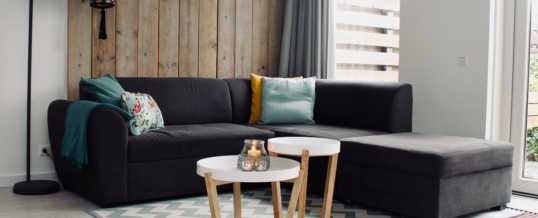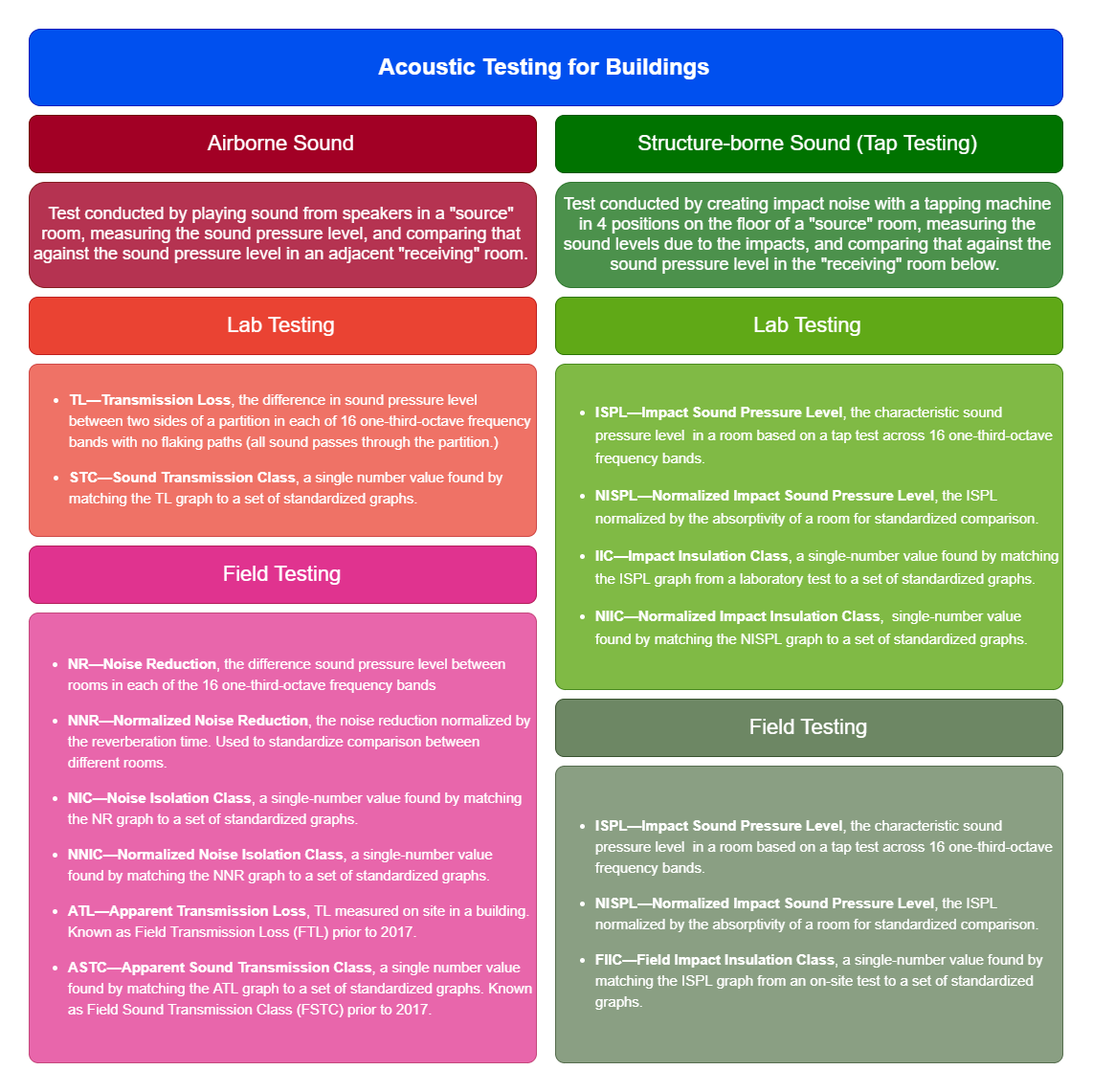
It can be difficult to compare the acoustics of one room against another room. Not only do the size and shape of a room change its acoustic feeling, but the materials of the ceiling, walls, and floor and their construction, as well as furniture, décor, and other objects in the room can change the way sound moves throughout a space. Couple that with the subjective opinions of individuals concerning what is annoying, too echo-y, too quiet, or too noisy, and you begin to see why room acoustics is a tricky thing. At some point, it becomes more of an art than a science.
However, professionals in acoustics have done their best to create ways to measure the way sound interacts with rooms and structures. These measures include things like reverberation time, sound transmission class, and impact insulation class, all of which help ensure high quality construction while holding all those involved in the design and construction of spaces to a reliable standard.
Before we jump into the different ways you can quantify the acoustic qualities of a room, we should quickly overview some basics about sound in rooms. From a physics perspective, sound is a vibration. Sound vibrations can travel through the air (airborne sound) or through floors and walls (structure-borne sound). Sound can also bounce off surfaces, which is sometimes called reflection, or bend around edges, which sometimes called diffraction. With so many ways for sound to get from one point to another, you can see why it might be difficult to manage sound.
In general, there are 3 ways to manage sound between rooms, only one of which is usually useful. You can:
- Increase the distance between rooms, letting the sound dissipate over distance. This is not usually an option, especially if the building has already been built.
- Introduce antinoise sound to cancel out the sound. This noise control method, called active noise control, works best for steady, constant, low-frequency rumbles and thrums—like the sound of an engine on a plane—but is not generally cost-effective or useful for architectural applications.
- Use noise barriers to reflect or absorb sound and seal airways. This is where the magic of soundproofing work happens.
Acoustical consultants and designers use many different ways (called acoustical treatments) to manage sound between rooms. Acoustical treatments can include things like adding carpet or a rug, adding reflective panels, or adding barriers like cubical partitions.
Because there are so many treatment options and so many facets to consider for the acoustical design of a room or building, acoustics professionals have developed a veritable army of tests to understand the acoustical properties of a space, product, or design. At times it can be overwhelming to try to keep track of the different tests, what they do, why they matter, and what they mean for you, especially when each one is identified by an acronym. When it comes to tests, it’s easy to get lost in the alphabet soup of acronyms and numbers.
In this series, we will give introductions to these tests, as well as some practical tips on what the tests mean and how they are used in acoustical design. Let the infographic below serve as both a roadmap and a reference as we delve deeper into the world of room acoustics.
Let’s talk about Sound Transmission Class. Learn more in the next post.

FEB
2020

About the Author: